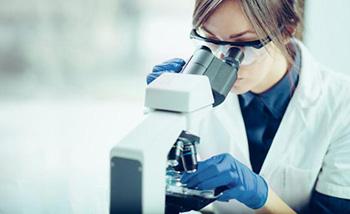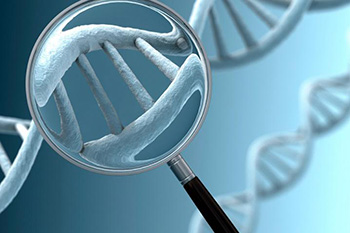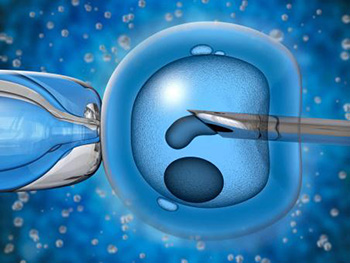Preimplantation genetic diagnosis is a modern diagnosis of gene and chromosomal abnormalities, which is carried out before the transfer of embryos into the uterine cavity. The examination is carried out as part of the IVF protocol as prescribed by a specialist or at the request of the patient. PGD allows you to identify chromosomal abnormalities, as well as the likelihood of the transmission of genetic diseases to the fetus even before the embryos are transplanted into the uterus.
Objectives of PGD
The survey is carried out in order to identify a number of genetic diseases caused by pathological changes in the structure of DNA. Patients who underwent PGD as part of the IVF protocol are much less likely to experience fetal freezing in early pregnancy, spontaneous miscarriages and premature birth.
 The main goals of genetic research at the K + 31 reproductive medicine center are:
The main goals of genetic research at the K + 31 reproductive medicine center are:
- reducing the likelihood of conceiving a child with chromosomal abnormalities;
- "Culling" of embryos with an abnormal karyotype;
- finding out the reasons for the failed implantation of blastocysts in previous IVF procedures;
- determination of the Rh factor of the fetus;
- screening of embryos with pathologies that are not amenable to treatment.
Periodic modernization of equipment in the embryological laboratory of the clinic significantly expands the range of detected anomalies. With the help of this physician, specialists from the K + 31 reproductive center diagnose more than 150 types of genetic abnormalities in embryos. Due to this, reproductive specialists and embryologists choose only viable diploid cells for replanting into the uterine cavity, which increases the chances of having a healthy child.
Indications for PGD
 Preimplantation diagnostics can be performed at the request of the patients themselves. But in most cases, PGD is resorted to in the presence of special medical indications:
Preimplantation diagnostics can be performed at the request of the patients themselves. But in most cases, PGD is resorted to in the presence of special medical indications:
- hereditary diseases in parents;
- impaired spermatogenesis in men;
- genetic diseases in close relatives;
- hereditary pathologies in one of the spouses;
- frequent spontaneous abortions in women;
- more than 2 unsuccessful attempts at artificial insemination;
- the patient's age is over 35-40 years old;
- genetic and chromosomal abnormalities in oocytes.
The results of the examination allow us to assess the likelihood of the appearance of oncological diseases that are not amenable to effective treatment. Geneticists also find out the Rh factor of the fetus, which is necessary to exclude hemolytic disease in Rh-conflict with the mother's body.
What diseases are diagnosed with PGD?
In the K + 31 clinic, diagnostics are carried out by specialists in the field of genetics, reproductive medicine and embryology. Doctors with a high degree of qualification and extensive practical experience select only viable and healthy embryos for IVF.
 After receiving embryos in vitro, specialists conduct an examination to identify diseases such as:
After receiving embryos in vitro, specialists conduct an examination to identify diseases such as:
- lymphoma;
- myodystrophy;
- torsion dystonia;
- leukemia;
- X-broken chromosome syndrome;
- neurofibromatosis;
- Down syndrome;
- hemophilia;
- retinitis pigmentosa;
- Gaucher disease;
- cystic fibrosis;
- achondroplasia;
- phenylketonuria;
- Gettington's disease;
- retinoblastoma;
- Alpert's syndrome;
- aneuplodia, etc.
In case of detection of the above diseases, the embryos are discarded and not used for IVF. The selection of the most viable embryos increases the chances of a successful conception and pregnancy by an average of 17-23%.
Features of PGD
For diagnostics, both eggs and embryos can be used. In the second case, the examination will be more informative, since its results can reveal deviations not only in the maternal, but also in the paternal genetic material.
 The procedure is carried out in 2 stages:
The procedure is carried out in 2 stages:
- collection of cells from embryos using modern laser equipment;
- research of biomaterial in the genetic laboratory.
During PGD, a specialist performs a biopsy in order to obtain one blastomere from an embryo in the cleavage stage. The procedure is carried out 3-5 days after fertilization of oocytes with spermatozoa. The biopsy does not disrupt the further development of the embryo, and also does not provoke the development of any diseases in the future.
At the K + 31 clinic, cells are taken using a laser gun, which significantly reduces the risk of damage to diploid cells. After that, the geneticist conducts a DNA analysis, according to the results of which the risks of developing hereditary diseases in the fetus are assessed.
Benefits of PGD
Unlike other types of genetic research, PGD does not affect the plan of the IVF protocol in any way. The only exception applies to the stage of ovulation stimulation, which is much more intense. This makes it possible to obtain a larger number of oocytes, from which it will subsequently be possible to select the highest quality gametes.
 The advantages of carrying out PGD at the K + 31 clinic include:
The advantages of carrying out PGD at the K + 31 clinic include:
- high information content of genetic research;
- the possibility of carrying out diagnostics before transferring embryos into the uterine cavity;
- reducing the risk of fetal freezing and miscarriage;
- the ability to determine the sex of the child at the stage of embryogenesis;
- an increase in the chances of successful implantation of blastocysts into the endometrium;
- minimizing the risks of developing genetic pathologies in a child;
- identifying the causes of failed implantation in previous IVF attempts;
- reducing the likelihood of multiple pregnancies;
- the ability to select histocompatible embryos for donation to a sister or brother.
PGD is one of the most informative research methods to prevent the conception of a child with severe hereditary diseases. In the K + 31 clinic, diagnostics are carried out by highly qualified embryologists and geneticists. If necessary, patients can order a separate study to determine a specific disease or a whole complex of genetic abnormalities.

